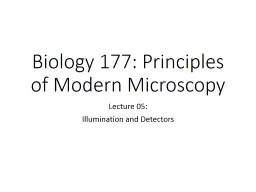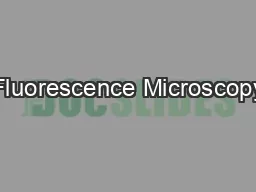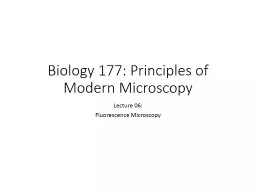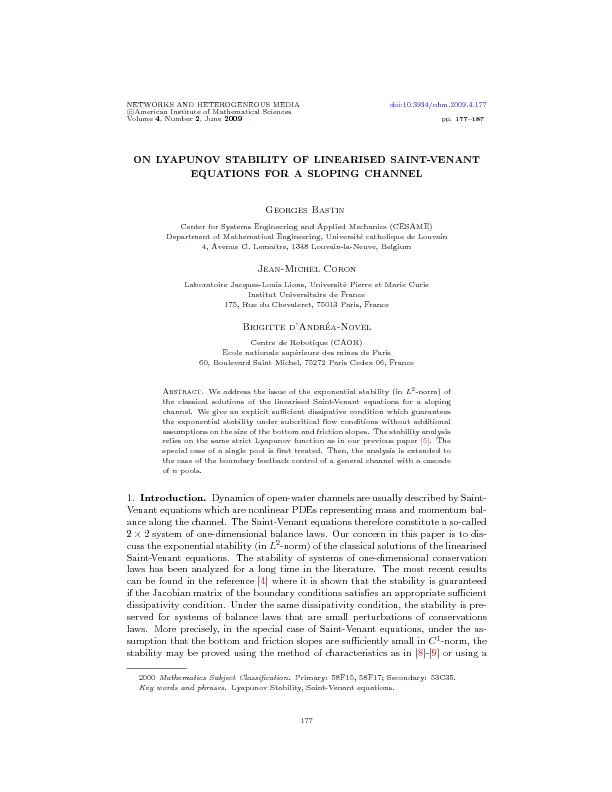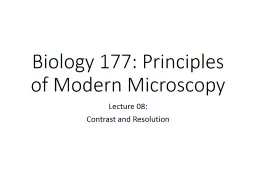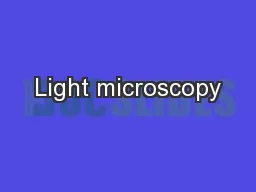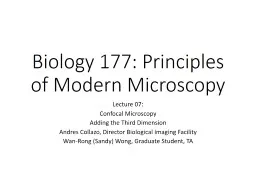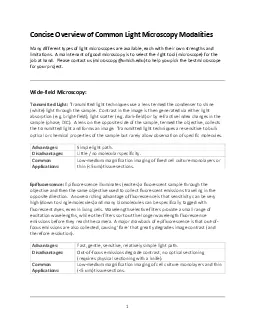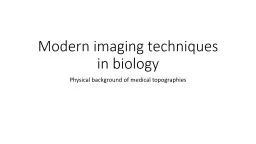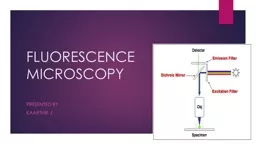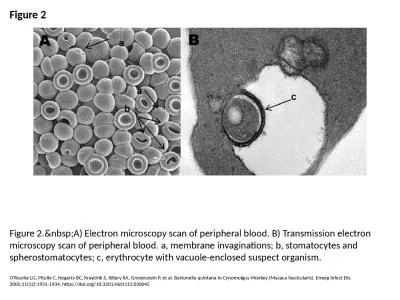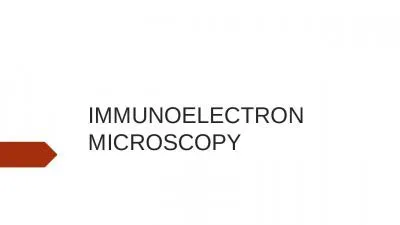PPT-Biology 177: Principles of Modern Microscopy
Author : faustina-dinatale | Published Date : 2016-08-14
Lecture 05 Illumination and Detectors Lecture 5 Illumination and Detectors Review diffraction Illumination sources TungstenHalogen Mercury arc lamp Metal Halide
Presentation Embed Code
Download Presentation
Download Presentation The PPT/PDF document "Biology 177: Principles of Modern Micros..." is the property of its rightful owner. Permission is granted to download and print the materials on this website for personal, non-commercial use only, and to display it on your personal computer provided you do not modify the materials and that you retain all copyright notices contained in the materials. By downloading content from our website, you accept the terms of this agreement.
Biology 177: Principles of Modern Microscopy: Transcript
Lecture 05 Illumination and Detectors Lecture 5 Illumination and Detectors Review diffraction Illumination sources TungstenHalogen Mercury arc lamp Metal Halide Arc lamps Xenon Arc lamps. Lecture . 09: . Polarization and DIC. Lecture 9: Polarization and DIC. Review Contrast and Phase Contrast. Polarization. Birefringence. Nomarski. . (Differential . Interference Contrast). Resolution. Chelsea Aitken. Peter Aspinall. Advantages Over Light Microscopy. Resolution of light microscopy limited by Rayleigh Criterion. If two objects cannot be seen as distinct structures, then they may be considered coincident in space. Lecture 06: . Fluorescence Microscopy. Lecture . 6: Fluorescence . Microscopy. Detectors for Microscopy, Part 2. CMOS, PMT and APD. Phenomenon . of Fluorescence. Energy . Diagram. Rates . of excitation, emission, ISC. doi:10.3934/nhm.2009.4.177 c AmericanInstituteofMathematicalSciencesVolume4,Number2,June2009pp.177{187 Abstract. 5 4 8 ]-[ 9 ]orusinga 2000MathematicsSubjectClassi cation.Primary:58F15,58F17;Secondary Lecture . 08: . Contrast and Resolution. Lecture 8: Contrast and Resolution. Bright-field. Tinctorial. dyes: the first contrast. Review . of Kohler Illumination. Tradeoffs . in Contrast/Resolution. Dark . II. MENA3100,OBK, . 29.01.15. We don’t read all. You don’ have to read all. 1.3 Specimen Preparation. Read it. 1.4.1 Bright-Field and Dark-Field. Definetly. 1.4.2 Phase-Contrast. Cursori. 1.4.3 Polarized-Light. Lecture . 07: . Confocal Microscopy. Adding the Third Dimension. Andres Collazo, Director Biological Imaging Facility. Wan-. Rong. (Sandy) Wong, Graduate Student, TA. Lecture . 7: Confocal Microscopy. 1Many different types of light microscopesare available each with their own strengths and limitationsA main tenant of good microscopy is to select the right tool microscope for the job at handPlease c The physical background of medical . tomographies. Lecture. 7. Modern imaging techniques in biology: Lecture 7. 1. MRI. . thematics. Microscopic and macroscopic magnetization. The Bloch equation. T. KAARTHIK J. INTRODUCTION. A fluorescence microscope is a optical microscope that uses fluorescence and phosphorescence instead of , or I addition to reflection and absorption to study properties of organic or inorganic substances.. AIM : T THEORY: Microscope is the most commonly used piece of apparatus in the laboratory. It produces greatly enlarged images of minute objects. LIGHT MICROSCOPE A Light Microscope can be simple or O'Rourke LG, Pitulle C, Hegarty BC, Kraycirik S, Killary KA, Grosenstein P, et al. Bartonella quintana in Cynomolgus Monkey (Macaca fascicularis). Emerg Infect Dis. 2005;11(12):1931-1934. https://doi.org/10.3201/eid1112.030045. Prepare for your AP Biology exam with confidence using these expertly crafted questions and answers. Dive into key topics and gain insights into effective study strategies. ELECTRON. . MICROSC. O. PY. . . . Electron. . micros. c. opy. . (EM). . is a technique. . u. s. ed. . for. . obtaining. . high re. s. olu. t. ion. . images. . of. . biological and non-biologi.
Download Document
Here is the link to download the presentation.
"Biology 177: Principles of Modern Microscopy"The content belongs to its owner. You may download and print it for personal use, without modification, and keep all copyright notices. By downloading, you agree to these terms.
Related Documents

